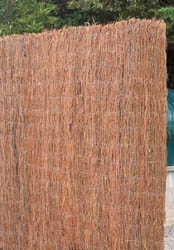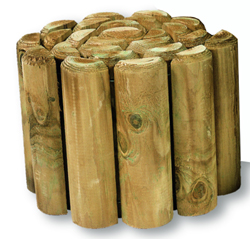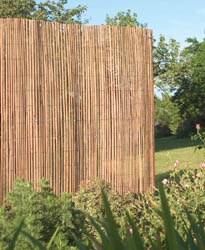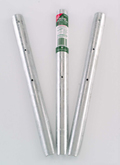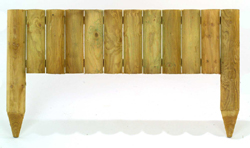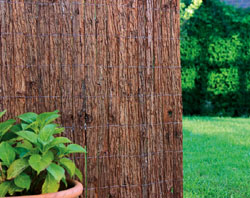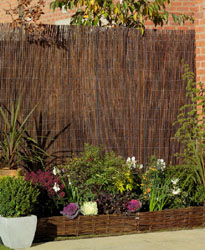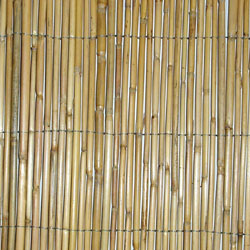
01757 28939701757 289397

UK Farm Supplies Ellerton, York, United Kingdom,
Garden Maintenance
Plant Watering
When you buy a plant from a garden centre it will come in a relatively small pot with little soil so it will dry out quickly. It will have been watered daily in the garden centre and when you plant it out, even if it is surrounded by damp soil it will still need water on a regular basis – at least every other day for the first week in good growing conditions. As the roots spread out watering should take place less often, but in good quantity so that it can encourage a deep root run. Try a light watering on a spare patch of soil and after 30 mins see how far down the water has got – I bet you will be surprised just how little depth has been irrigated – the lesson here is to show how much water you need to apply, especially for trees and shrubs which have deep roots.
Having said all this, don’t water too much (frequently). Established plants should only need watering after prolonged dry spells, and then with a good quantity of water. Over-watering will have two effects, both bad. First it will wash some of the nutrients deeper into the soil and away from where they are needed, and secondly it will encourage lots of leaf growth – so for lettuces, cabbages and so on all well and good, but for plants you are growing for flowers, fruit or roots not so good – save your time and the water.
Fruits and seeds (I’m thinking peas and beans) need a bit more water to help swell the pods, and of course densely planted containers and hanging baskets will need daily watering like the garden centre plants in their small pots.
You can reduce the water lost from the soil by mulching and this will also reduce weed seed germination, and weeds will compete with your plants for the available water. Soil containing humus from compost, leaf mould or manure will hold more water, and so decrease the frequency with which you have to add more.
Think about these things as you water and how they apply in your particular garden and then you should be able to save substantial amounts of water and time.
Camellia Plants
Camellias are easy to grow if you have a neutral or acid soil – if heathers or rhododendrons grow in your area, then camellias will too. Camellias are especially useful because many of them flower during the winter months when little else is providing colour in the garden.
Camellias can cope with full sun or even reasonably heavy shade, light or dappled shade is probably ideal. Try to avoid planting at the base of old walls because lime can leach out of the mortar to make a locally alkaline soil. Plant in soil to which has been added some ericaceous compost and feed monthly during the growing season with an ericaceous feed for best results. If the site is subject to strong winds stake firmly, young stems are brittle and can break.
There are three types of camellia, the least hardy are the small flowered susquana camellias that flower in September and October, these frequently have fragrant flowers. These are followed by the williamsii varieties which tend to flower November to February, and finally the japonicas which flower from early spring to as late as July.
Some camellias will display flowers of more than one colour, this is known as sporting. Adelina Patti is the variety most likely to do this.
Propagation is a bit tricky, seeds rarely work and cutting have to be taken off a shoot that has a callous. Pull off a side shoot from such a shoot in October, dip in rooting hormone and pot up into a peat/sand mixture and keep at 18-19 degrees C for a couple of months.
Camellias can cope with full sun or even reasonably heavy shade, light or dappled shade is probably ideal. Try to avoid planting at the base of old walls because lime can leach out of the mortar to make a locally alkaline soil. Plant in soil to which has been added some ericaceous compost and feed monthly during the growing season with an ericaceous feed for best results. If the site is subject to strong winds stake firmly, young stems are brittle and can break.
There are three types of camellia, the least hardy are the small flowered susquana camellias that flower in September and October, these frequently have fragrant flowers. These are followed by the williamsii varieties which tend to flower November to February, and finally the japonicas which flower from early spring to as late as July.
Some camellias will display flowers of more than one colour, this is known as sporting. Adelina Patti is the variety most likely to do this.
Propagation is a bit tricky, seeds rarely work and cutting have to be taken off a shoot that has a callous. Pull off a side shoot from such a shoot in October, dip in rooting hormone and pot up into a peat/sand mixture and keep at 18-19 degrees C for a couple of months.
Garden Soils
Making your Garden more Plant-friendly
We saw last week how to understand the characteristics of your garden the terroir as it would be called if it was a vineyard! This week we will look at some of the things you might do to improve this that will help you grow a wider range of plants and increase growth rates.
There are perhaps two things that will need a lot of work and or time to get right and so really must be your top priorities. The first is exposure to serious wind especially north or east winds which are cold, west wind which is the commonest and frequently the strongest, or wind off the sea which can be laden with damaging salt. To provide shelter for a large garden you will have to plant a shelter belt of trees, generally at least a double row of tall conifers and a double row of deciduous trees with as much under planting as you can provide. In smaller gardens a hedge or fairly solid fence can do enough, but bear in mind that you will get good shelter only for a distance of about twice the height of your barrier with the semi-permeable tree based shelter belts this goes up to ten times the height because less turbulence is created.
The other bad problem to have is very poor drainage. In this case you need to look at why the drainage is poor it is usually associated with clay soil but if it has been crossed by heavy vehicles when wet you may have developed a pan a layer of compacted clay that will not let moisture through. Undoubtedly the best answer here if you have good access is to pay a farmer to come and plough very deeply and incorporate as much organic matter as possible compost, leaf mould, or even straw. Ideally also add lime and do the work in a dry spell in autumn and allow the winter frosts to help break the soil down. If you access does not allow ploughing you will have to hire a large rotovator (not a cultivator) and do the work yourself.
We saw last week how to understand the characteristics of your garden the terroir as it would be called if it was a vineyard! This week we will look at some of the things you might do to improve this that will help you grow a wider range of plants and increase growth rates.
There are perhaps two things that will need a lot of work and or time to get right and so really must be your top priorities. The first is exposure to serious wind especially north or east winds which are cold, west wind which is the commonest and frequently the strongest, or wind off the sea which can be laden with damaging salt. To provide shelter for a large garden you will have to plant a shelter belt of trees, generally at least a double row of tall conifers and a double row of deciduous trees with as much under planting as you can provide. In smaller gardens a hedge or fairly solid fence can do enough, but bear in mind that you will get good shelter only for a distance of about twice the height of your barrier with the semi-permeable tree based shelter belts this goes up to ten times the height because less turbulence is created.
The other bad problem to have is very poor drainage. In this case you need to look at why the drainage is poor it is usually associated with clay soil but if it has been crossed by heavy vehicles when wet you may have developed a pan a layer of compacted clay that will not let moisture through. Undoubtedly the best answer here if you have good access is to pay a farmer to come and plough very deeply and incorporate as much organic matter as possible compost, leaf mould, or even straw. Ideally also add lime and do the work in a dry spell in autumn and allow the winter frosts to help break the soil down. If you access does not allow ploughing you will have to hire a large rotovator (not a cultivator) and do the work yourself.
Heather Plants
Heathers are actually a few species of similar plants - the basic heater is Calluna vulgaris, but Ericas are perhaps the most commonly grown as they are more tolerant. Daboeca cantabrica.
Calluna vulgaris is an extremely frost hardy native to cold moorlands in northern Europe. It needs an acid soil, ideally gritty and of low fertility, it will often not perform too well under kinder conditions. Flower colours vary from pink to purple and white. Sizes vary from cultivar to cultivar, eventually spreading to 15-50 cm with heights to 60 cm depending on variety. Propagate via tip rooting. Callunas tend to flower from spring to autumn.
Ericas (sometimes known as Lings) are the African relative of calluna vulgaris, most originating in the Cape heaths of South Africa. They are not as frost tolerant as calluna, but several species are hardy enough to grow anywhere in the UK. They generally like sun and better drainage than Callunas. Propagate via seeds or cuttings in late summer (July to October). Many Ericas have prolonged flowering periods of up to 5 months, and varieties can be chosen to give year round colour.
Many varieties of Calluna and Erica have interesting coloured foliage which can greatly increase the attractiveness of a heather bed.
Daboeca cantabrica has purple or white flowers and can grow to 60 cm high, otherwise just like Calluna and Erica.
Next week we will have a table showing the flowering periods, flower colour, foliage colour and spread of a number of heathers so you can choose well to get year round colour.
Heathers are often interplanted with small conifers, and indeed this looks good, we also have a couple of potentillas (the shrubby ones, not the herbaceous ones) in our heather bed which brighten up winter flowering heathers during summer.
All heathers should by lightly clipped back after flowering to maintain shape and vigour.
Summer Flowering Bulbs
The one thing all summer flowering bulbs hate is wet so if you have a heavy soil you must incorporate a lot of horticultural grit for ideally about a metre around your chosen site.
If you are choosing the bulbs, choose the biggest ones, it will make a difference, make sure they are dry and show no signs of mould or fungus. Plant as soon as you can before mid August, but after that keep the bulbs in a cool, dry, dark place until April if you plant the out in winter they are likely to rot.
Bulbs should be planted about twice the depth of the bulb itself, with the growing tip upwards and the roots down. Spacing should be 2-3 times the diameter of the bulb. The general view is that summer flowering bulbs should be lifted as they are not hardy, but if you plant deeply and mulch you will get away with a lot, as long as the soil is not too wet. You will have to anticipate some losses, but you will discover which bulbs will survive. All bulbs should be planted in drifts of at least five less will look lost. Planting in containers is good as drainage will not be a problem.
So which to choose? Alliums are always popular, come in a vast variety of size and colour, and insects love them and these are the beasts that will protect you from aphids, so encourage them all you can! Freesias are usually productive and if you like cut flowers for the house are one of the very best.
Agapanthus and cannas are exotic and look great, even in smaller groups, but these do tend to be susceptible to the cold. Having said that, we have kept a canna on the north side of our house in East Yorkshire in an unimproved clay soil for four years now, and it has multiplied and flowers well! It shouldn’t have survived!
Probably among the most reliable and easy are montbretia, and excellent splash of colour in late summer, galtonia (a summer flowering snowdrop like flower), diorama, lilies, and gladiolus (try the fragrant Abyssinian gladiolus murielae). I would not lift any of these.
Gardening Jobs
After the Great Wet of December and January our garden is still partly underwater, not from a flooded river but our pond overflowed and the lack of maintenance on the dykes has meant that the heavy clay soil is even slower to drain than normal.
However for those of you who live on a better behaved land, it is time to start preparing for the coming season.
First of all cut back all the shrubs that have given you pleasure during the winter. Cut dogwoods back to the ground, winter jasmine to two buds of last year’s growth, tidy up viburnums, pansies and winter flowering heathers. Dead head polyanthus and cut back perennials that you left for the birds. Ornamental grasses should be cut back to within an inch of the ground.
You can plant leeks and broad beans now (indoors) but be certain to have them somewhere warmish or you will find they have rotted before germinating. If you want to get perennial flowers away to an early start you will need to buy a propagator I bought one a couple of weeks ago from our local garden centre for £12 and it has already raised a crop of peashoots, some leeks and some parsley seedlings are just coming through.
This is the time to divide clumps of snowdrops and to make sure you have all the vegetable seed you will need next month. Prune summer flowering wisteria to a couple of buds of last year’s growth and trim hedges.
Garden Sculpture
Home made garden sculpures
Assuming you are not a budding Michelangelo with a few years to spare and a stock of Carrara marble, start with the assumption that you are not about to get into stone carving – but that doesn’t mean you can’t create something worthwhile. Let’s look at some more mundane materials and what you might do with them.
Chicken wire can be crumpled up to make any number of shapes, although most of the commercially available ones seem to be animals or birds. You would struggle to make fine details but otherwise it is easy to work. When you want to join another piece of wire on, simply overlap two holes, push a nail through the overlap and twist a few times. If you have delicate hands you might be well advised to wear gloves.
Rope is interesting, I have made a 5 ft moongate to frame a viburnum plicatum which is spectacular when in flower. Simple make a timber frame (I used tannalised 100 x 50mm), drill through every 50 mm or so and use the rope to create whatever pattern you want. 6mm polypropylene rope is available in a few colours fairly cheaply on the internet. You can use any of the old string and nail pattern books to get your ideas, just use holes in either a frame or a back board in place of nails. I have also seen an excellent spiders web made in a tree, complete with large wooden spider! If you have never used polypropylene rope before, note that immediately after cutting you should melt the ends with a match to stop fraying, and be careful, molten polypropylene is very hot and loves to stick to skin!
Next time we will look at the use of wood in home made sculpures.
Assuming you are not a budding Michelangelo with a few years to spare and a stock of Carrara marble, start with the assumption that you are not about to get into stone carving – but that doesn’t mean you can’t create something worthwhile. Let’s look at some more mundane materials and what you might do with them.
Chicken wire can be crumpled up to make any number of shapes, although most of the commercially available ones seem to be animals or birds. You would struggle to make fine details but otherwise it is easy to work. When you want to join another piece of wire on, simply overlap two holes, push a nail through the overlap and twist a few times. If you have delicate hands you might be well advised to wear gloves.
Rope is interesting, I have made a 5 ft moongate to frame a viburnum plicatum which is spectacular when in flower. Simple make a timber frame (I used tannalised 100 x 50mm), drill through every 50 mm or so and use the rope to create whatever pattern you want. 6mm polypropylene rope is available in a few colours fairly cheaply on the internet. You can use any of the old string and nail pattern books to get your ideas, just use holes in either a frame or a back board in place of nails. I have also seen an excellent spiders web made in a tree, complete with large wooden spider! If you have never used polypropylene rope before, note that immediately after cutting you should melt the ends with a match to stop fraying, and be careful, molten polypropylene is very hot and loves to stick to skin!
Next time we will look at the use of wood in home made sculpures.
Plants for the shade
Many plants will not grow well in shady areas and most are harder to establish. First you need to assess what problem you have is the area shaded by trees which are thirsty and make for a dry shade, or is the area shaded by a house or a wall and the area is wet or even boggy?
For dry shady areas that are dry because of trees be wary of general fertilisation because you will also encourage growth and water usage by the established trees thus compounding the problem. In this case fertilise locally to the new planting little and often rather than heavily. If the area does not have tree issues then dig in manure or compost to help the soil retain more moisture. If the soil is wet then dig in sharp sand and grit and make sure there is not a hard pan caused by compaction if so the pan must be broken.
Theses measures will help your new plants but you will still need to choose plants based on whether the area is wet or dry.
For dry shade useful shrubs would include pheasant’s eye, vinca, osmanthus, mahonia, garrya eliptica (huge catkins), hydrangeas, and Ruscus Aculeatus (sometimes known as butcher’s broom). Flowers that will tolerate dry shade range from the huge and architectural crambe cordifolia, through epimediums and anaphalis down to geraniums, lamium and pulmonaria (as long as it isn’t too dry)
Damp shade is easier, most of the dry shade plants will do better, but in addition consider rhododendrons, camellias and azaleas (if the soil is acid or neutral), eleagnus. Perennials such as hostas, foxgloves, lysimachia, brunnera, bergenia, tiarella and alchemilla mollis will all do well.
Many ferns do well in shade, but some are only good in the damp, so take advice when you have found out what is available.
There are really only a few climbers that do well morello cherry, hydrangea petiolaris and winter jasmine.
Ground Cover
Bare soil attracts weeds, it is better to cover the soil with either a mulch (such as compost, bark or woodchips) or with plant material. As with all plants, well dug and fertilised soil, a sunny position and sufficient water will maximise growth rate and hence establish your ground cover in least time.
In shady positions there are a number of plants which will give good cover, particularly geraniums, pulmonarias (which spread by seeding freely), ajugas (as long as the soil is not too dry), tiarella, and symphytum with its white flowers which can brighten up a dark place. Some shrubs can be especially useful in shade, things such as hypericum calycinum with its yellow flowers for long periods in the summer followed by berries. Vincas, major and minor, are good to the point of being invasive, variegated forms are a bit less robust and hence easier to control.
A couple of plants will be good in light, but not heavy shade, - bergenia with its purple or reddish flowers in early spring, and lamiums whose interestingly variegated leave attract attention in a dull area. Heathers are good in all but heavy shade and can be especially useful in providing colour during the winter these however will not thrive in an alkaline soil. Pachysandra terminals and gaultheria procumbens are also good if you have acid or neutral soil.
In sunnier spots the choice is considerably wider, all those suitable for shade will grow faster in a sunny position, but more plants are available which would not thrive at lower light levels. The classic is undoubtedly lady’s mantle, alchemilla mollis, which will perform acceptably in a semi shady spot, its hairy leaves and fairly insignificant green flowers however to not endear it to me. I would prefer to use some of the spreading herbs thymes with their purple, bee-attracting flowers in summer, marjoram or chives, always useful in the kitchen and a bit taller at 12-18 inches with attractive purple flowers.
In full sun consider catmint (nepeta), stachys, whose grey leaves provide a very useful backdrop to focus attention on special plants further forward in the bed, and day lilies (hemerocallis) with their exotic flowers, and which will bulk up quickly given the right conditions. In a dry or alkaline soil, London Pride is useful.
If you need more, consider some or all of the following: aubretia, saxifrages, the more vigorous campanulas, ajuga, brunnera, cornus, sedums, potentilla, oxalis, hostas and acena.
Summer Gardening
Dead heading is crucial in July and August to keep a supply of new flowers coming; indeed some plants will benefit from some quite serious cutting back particularly lupins, penstemons, geraniums and delphiniums. Blanket flowering plants like aubretia and arabis should be clipped to remove all dead flowers so that with luck you will get a second, albeit weaker flowering in September.
Hanging baskets and containers should be getting one feed of Tomorite per week by now as the compost will have had all its goodness used up. Give flower borders one feed of the same per month starting early July. Watering of containers daily is essential and borders and veg beds as needed. Perennials will need trimming from time to time to keep them tidy.
All shrubs that flowered before the beginning of June should be cut back by now to ensure good flowering next year.
Weeding is an ongoing job, but during the next month the growth should start to slow if you have been thorough thus far.
Pick crops like courgettes and runner beans regularly in order to encourage higher yields. Keep thinning carrots, beetroot, turnip etc. Plant out any remaining plants grown in the greenhouse for growing outside. Final successional sowings should be planted early in the month.
Keep mowing the lawn, but again growth rate will start to reduce during the month, when it does cutting once per week should be enough.
Hanging baskets and containers should be getting one feed of Tomorite per week by now as the compost will have had all its goodness used up. Give flower borders one feed of the same per month starting early July. Watering of containers daily is essential and borders and veg beds as needed. Perennials will need trimming from time to time to keep them tidy.
All shrubs that flowered before the beginning of June should be cut back by now to ensure good flowering next year.
Weeding is an ongoing job, but during the next month the growth should start to slow if you have been thorough thus far.
Pick crops like courgettes and runner beans regularly in order to encourage higher yields. Keep thinning carrots, beetroot, turnip etc. Plant out any remaining plants grown in the greenhouse for growing outside. Final successional sowings should be planted early in the month.
Keep mowing the lawn, but again growth rate will start to reduce during the month, when it does cutting once per week should be enough.


